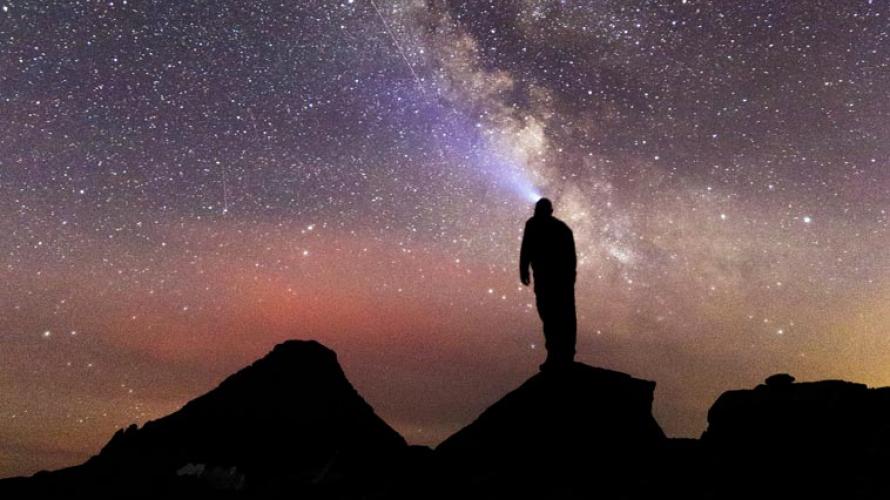
Star Party at Glacier Park
~Amy Grisak
Glacier National Park’s night sky is more spectacular with the installation of the new telescope observatory at the St. Mary Visitor Center. Slated to explore the cosmos by the beginning of July, it will offer a magnificent perspective of this precious resource.
“Anyone who has camped out gets to see something we don’t see during the days,” says Doug Mitchell, executive director of the Glacier National Park Conservancy, the non-profit arm of the Glacier National Park that spearheaded the funding for the project. “There’s something extra special about the night sky.”
More than two-thirds of the population has never viewed the Milky Way, so for many visitors to Glacier, this is their first time experiencing the magic of the night sky. The new telescope and observatory will give them a deeper perspective into this complex realm above us.
The Logan Pass star parties, held once a month from July to September, allow visitors to feel like they can practically touch the stars from the perspective at over 6600 ft. Several days a week throughout the summer, volunteer and NPS astronomers set up telescopes in the parking areas of the Apgar and St. Mary Visitor Center several nights a week, giving visitors a tour of the cosmos. The observatory in St. Mary expands this vision with big screens situated on the observatory itself displaying what the powerful telescope sees.
“Our telescope is a PlaneWave 20inch CDK, and that will tour around the night sky on top of a Paramount ME II robotic telescope mount. We will use a MallinCam SkyRaider DS16C. 3 to feed two 55-inch monitors mounted on the outside of the observatory with high resolution images of the night sky,” says Lee Rademaker, astronomy coordinator for the Hudson Bay District of Glacier.
For those who aren’t in tune with telescope specifications, this means they’ll be able to see into deep space far beyond what even the large, portable telescopes they currently use can view.
“This is a matter of being able to share this gift with more people. With the observatory, we will be able to magnify that,” says Mitchell.
Providing this unique experience is part of why the GNPC is passionate about the astronomy programs. They also supported the efforts of the NPS in their successful quest for Waterton-Glacier International Peace Park to be designation as the first international Dark Sky park from the International Dark Sky Association. This status recognizes their efforts, and continued progress, on adjusting lighting to reduce light pollution.
“We need to protect this resource that was given to us,” says Mitchell. “To be able to protect it is quite a gift.”
Beyond the summer programs, Mitchell says they are continually working on more distance learning outreach for educational programs throughout the country and the world.
“We’d love (for the observatory) to be part of that. We’re not done,” he says.
To learn more about the specific dates and times for the astronomy programs within the park, go to https://www.nps.gov/glac/learn/nature/night-sky.htm. And for information on the many projects of the GNPC, visit their site at https://glacier.org.
